It may be difficult to determine the species when you see a little silhouette elegantly gliding above in the summer heat, especially when there are a lot of similarities in size and flying technique. The Purple Martin (Progne subis) and the Barn Swallow (Hirundo rustica), both of which are nimble, acrobatic birds and summertime emblems, are two species that are commonly mistaken.
But upon closer examination, Purple Martins and Barn Swallows may be distinguished from one another by a variety of traits, both in terms of look and behavior. Read on to discover the main distinctions and develop your identifying skills as we examine them in-depth.
Physical attributes
As members of the swallow family (Hirundinidae), which is closely related to both purple martins and barn swallows, it makes sense that the two species sometimes get mixed up. From a distance, their sizes and shapes resemble one another, yet up close, the variances stand out.
Compared to Barn Swallows, Purple Martins are bigger birds, with a length of 19 cm to 20 cm (7.5 in to 7.9 in), a weight of 45 g to 60 g (1.6 oz to 2.1 oz), and a wingspan of 39 cm to 41 cm (15.3 in to 16.1 in). Males are iridescent and dark purple-blue throughout, with brighter breast and belly patches and silvery-gray underparts on females. Their bodies are robust, their wingspan is wide, and their tail is somewhat rounded where it is forked.
On the other hand, Barn Swallows are somewhat smaller, with a wingspan of 32 cm to 34.5 cm (12.5 in to 13.5 in), a measurement of 17 cm to 19 cm (6.5 in to 7.5 in), and a weight of 16 g to 22 g (0.6 oz to 0.8 oz). The morphology of Barn Swallows is more slender; they have pointed wings and longer trailing tail forks that may reach a length of 7 cm (3 in).
The pigmentation of these two species is another important distinguishing factor. Barn Swallows have a lighter buff belly and underwings, and a vivid chestnut-red forehead, face, and neck outlined by a contrasting black band. Steely blue is a vivid color on their back, throat, and upper wings.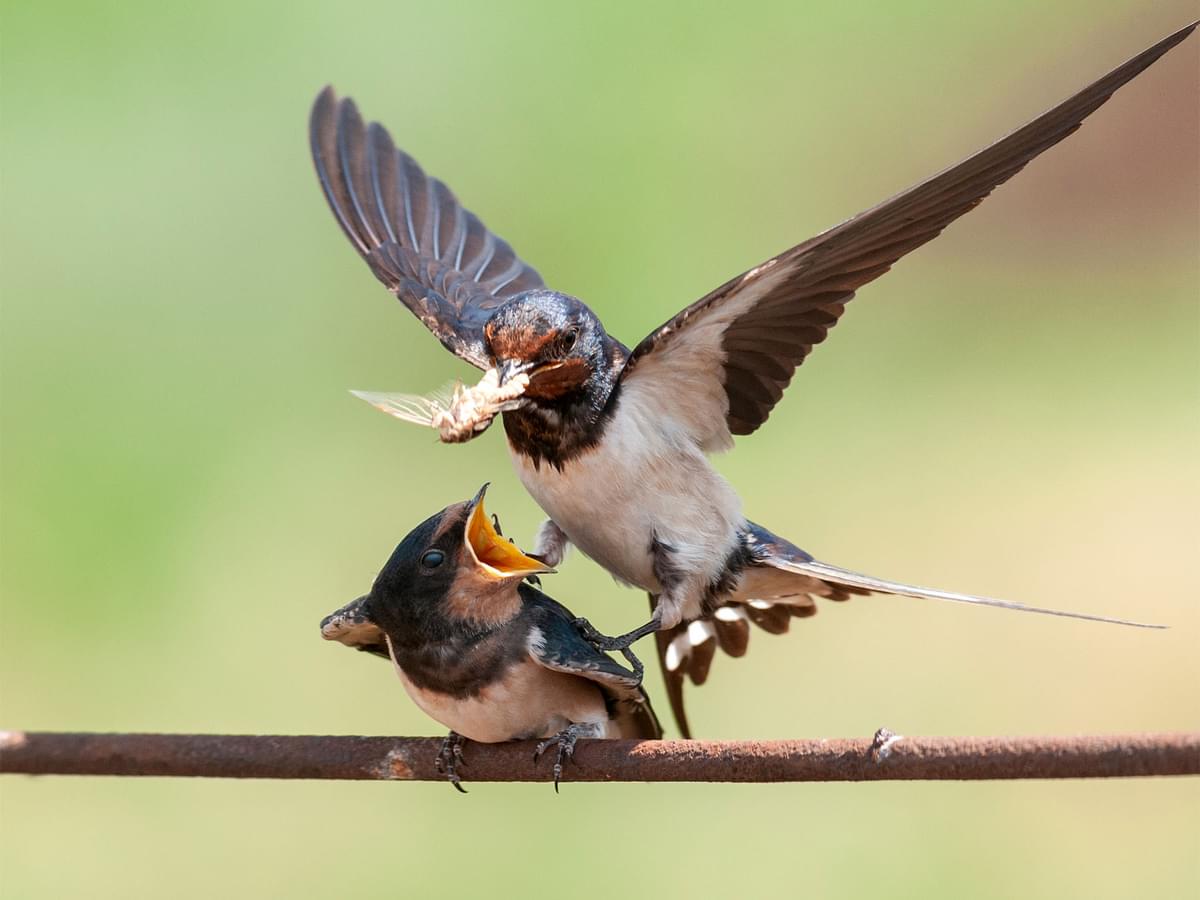
Habitat
Although they live in a variety of settings, barn swallows are most often seen in rural areas such as farms, pastures, and open meadows. throughout residential communities, they are also common throughout Asia and North Africa.
On the other hand, purple martins are more at home in inhabited regions and rely heavily on people to survive. Purple Martins that live in cities have significant challenges in finding appropriate places to nest, and as a result, they now almost exclusively depend on artificial nesting pods made by people.
The native ranges of Purple Martins and Barn Swallows overlap somewhat. But although Purple Martins are restricted to North and South America, Barn Swallows are the most widely distributed swallow species worldwide, occurring on all continents except Antarctica.
During their autumn migration to South America, Purple Martins may be seen across the southern US and Central America. They are mostly found in the eastern parts of Canada and the US.
As the most widely distributed member of the swallow family worldwide, barn swallows may be found breeding across the United States, a large portion of southern and western Canada, as well as areas of Europe, Asia, and North Africa. Sub-Saharan Africa, south and south-east Asia, northern Australia, and Central and South America are among the non-breeding regions.
Conduct and Social Organization
Despite their reputation for being peaceful and non-aggressive, purple martins often lose out against more aggressive species like starlings and house sparrows when it comes to nest places. More hardy and tenacious, barn swallows are highly protective of their breeding grounds and will often dive-bomb any trespassers who get too near.
Being a very gregarious species, purple martins have been found to roost in colonies with hundreds or even thousands of other birds. The biggest known colony of purple martins is said to consist of over 700,000 individuals. Barn Swallows are gregarious roosters as well, especially during the non-breeding season. However, their roosts are often compact and loose, and they may accommodate just one or up to 10 pairs of birds per nest site.
Both Barn Swallows and Purple Martins are entirely migratory, flying great distances from their wintering sites in the milder, warmer north to their breeding areas in the north.
Barn Swallows migrate differently than other species, using a combination of longer and shorter migratory paths. Purple Martins are often seen migrating during the late summer months throughout the southwest United States and Mexico. One well-known autumn migration path brings the species over the Gulf of Mexico and into the Amazon basin.
Both species go to their mating areas in the spring between late February and early April. Post-breeding departure starts in August, increases in September, and is often finished by early October.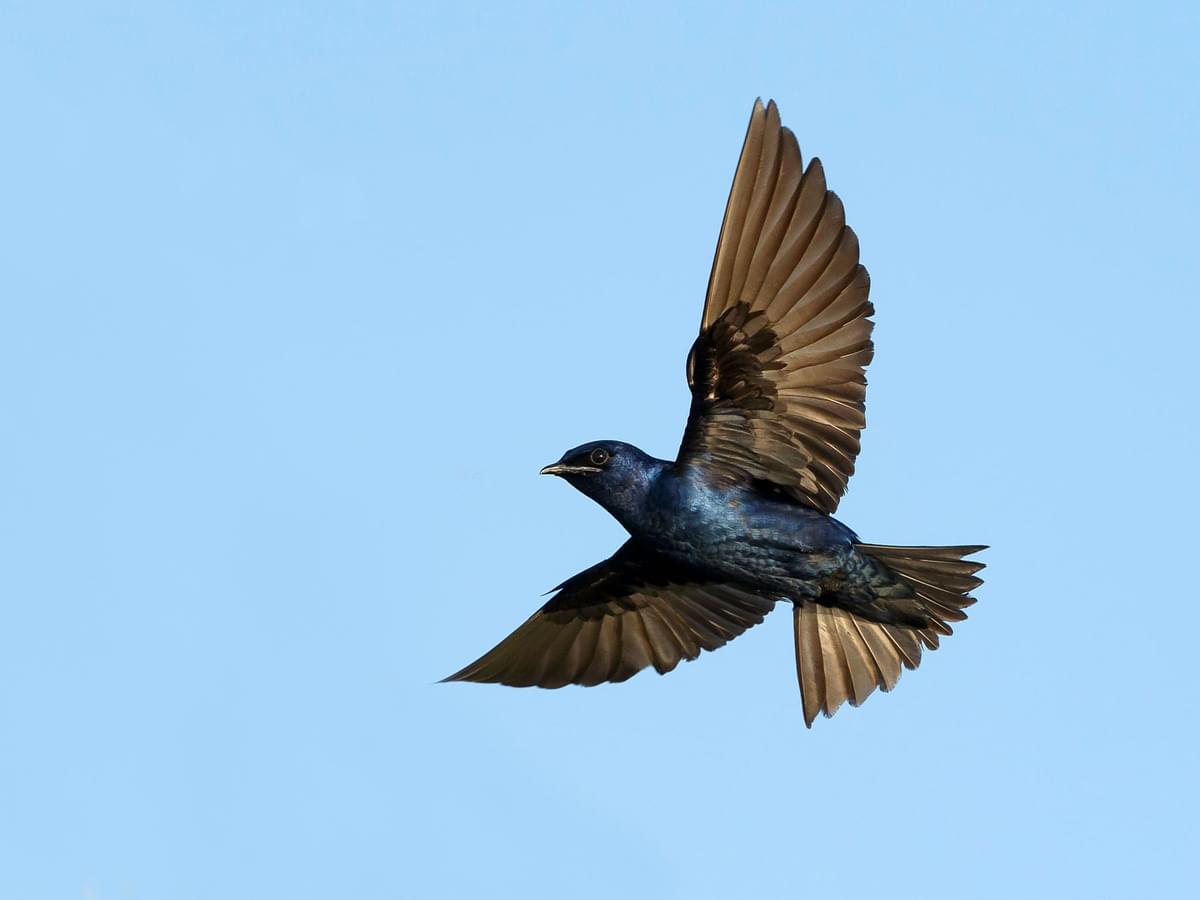
Habits of Nesting
Purple Martins are now almost totally reliant on artificial nesting pods provided by humans due to intense competition for nesting places and losing out on suitable cavities to more aggressive species like Starlings and House Sparrows. These pouches are strung on backyard poles, with many pods positioned in close proximity to one another to form their favored breeding colonies.
On the other hand, Barn Swallows make their own nests, often in barns, sheds, and other agricultural facilities, as well as on the undersides of ledges, shelves, bridges, and other man-made structures. Barn Swallows nest less communally than Purple Martins, yet they may still be observed in small groups nesting somewhat near to one another.
Purple Martins are cavity nesters; if they are fortunate enough to move into an empty Woodpecker cavity and are permitted to stay there to raise their young, the female will construct a cup-shaped nest inside using materials provided by the male, such as feathers, soft grasses, and twigs. When using artificial nesting pods, extra lining is added as a lining and a nest is constructed within the pod’s base.
The moist mud that barn swallows collect from lakeshores and riverbanks is used to create their elaborate nests, which are then sealed with their own saliva. Grass and feathers are used to build mud cups, and as the moist mud dries, a solid outer shell is formed. Together, men and women make magnificent structures.
Nowadays, Purple Martins rely nearly exclusively on human-made nesting pods.
The moist mud that barn swallows collect from lakeshores and riverbanks is used to create their elaborate nests, which are then sealed with their own saliva.
Food and Feeding Practices
As insectivores, barn swallows and purple martins rely on tiny flying insects they capture in the air for sustenance. Both species are expert hunters of the air; swallows are often seen skimming over open fields, marshy regions, and lakes and rivers, sometimes stopping to take a brief sip while searching for wetland invertebrates.
The primary diet of purple martins consists of flying beetles, dragonflies, moths, mosquitoes, and flies that are captured while in flight and at a rather high altitude. Their ability to fly quickly allows them to hunt and eat mostly at elevations of 50 to 120 meters (160 to 500 feet) above the earth.
Barn swallows eat a wider variety of insects, such as wasps, ants, and bees, which they catch when they fly quite near to the ground.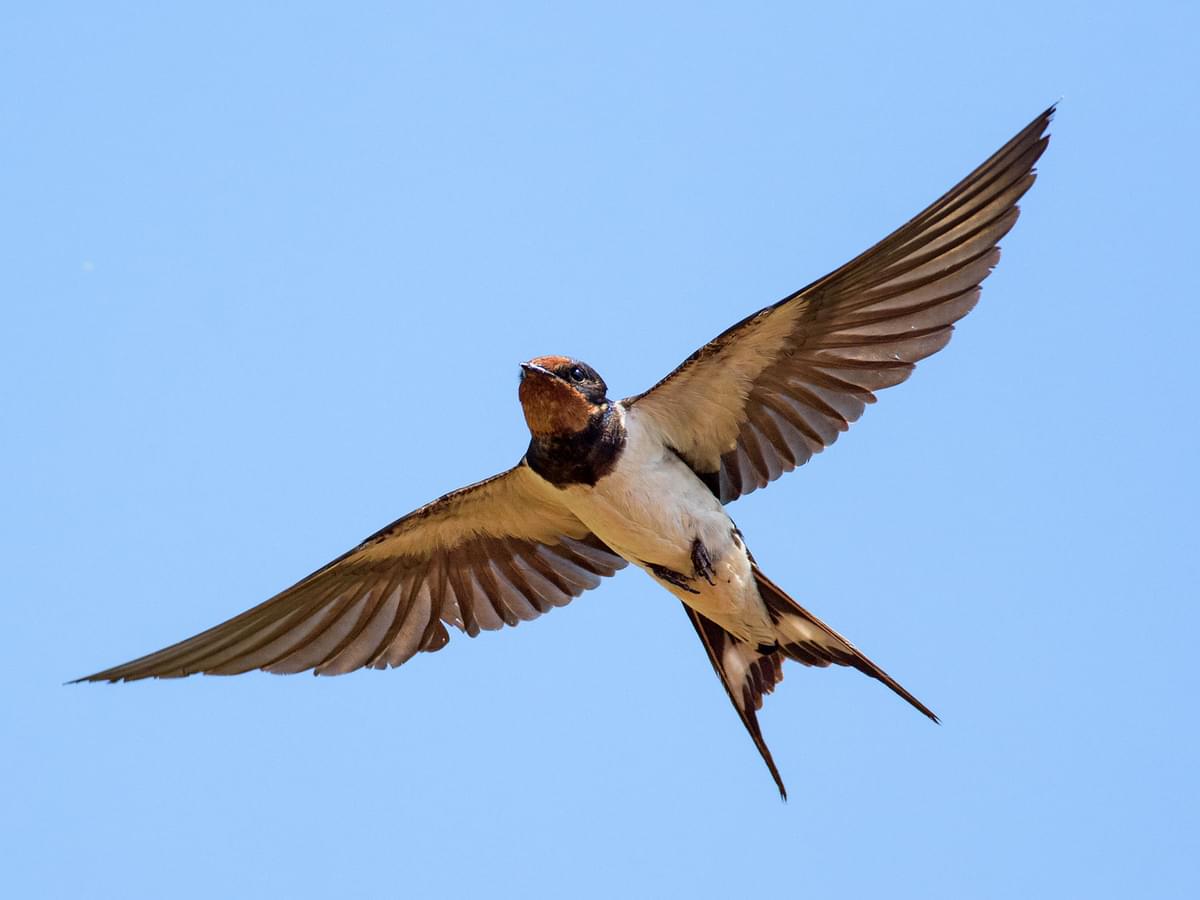
Voices and Interactions
Another distinguishing feature between Barn Swallows and Purple Martins is their sound and song, which may be used to reliably identify the two species.
Known for their broad repertoire of whistles, joyful chirping, and lively warbling, purple martins are renowned for being more tuneful than their smaller cousins. During the mating season, males may be heard claiming a territory and loudly chattering to let others know they are there.
Barn Swallows, on the other hand, have harsher vocalizations; they talk quickly while in flight and use piercing, high-pitched notes to communicate. These sounds, which are continuous patterns of repetition, are made during territorial defense, courtship, and by flock members during foraging or migration.
Status of Conservation
Barn Swallows and Purple Martins are both reasonably safe species with no immediate or serious concerns to their future survival or population sizes. Both species are categorized as least concern on a global scale. Ongoing conservation efforts and land management plans, however, may aid in preventing any modifications to their long-term existence.
Compared to Purple Martins, who already do well in regions with habitation, Barn Swallows, which nest and eat in more open areas, are more concerned about changes in land use and habitat degradation. Barn swallows are primarily foragers of insects on farms, and their existence depends on chemical-free agricultural practices. Pesticide-treated agricultural soil may cause swallows to consume tainted prey, which might be lethal.
Purple Martins’ nesting habits have changed significantly as a result of invasive species’ competition for their nest sites. It is crucial that there be an adequate supply of gourds or nesting pods provided by humans, and that the nesting pouches that are already in place be kept safe to use.
The global population of purple martins is believed to be about 9.3 million, a significantly smaller number than that of barn swallows, which are thought to number between 290 and 487 million.
Final Thoughts
Barn Swallows and Purple Martins have many behavioral and dietary characteristics in common, but they also vary greatly, making it easy to distinguish between the two species when they are flying above or at close range. Now that you’ve seen the aerial gymnastics of a particular species in the skies, you should be able to identify it quite well by glancing at its body size, color, and tail form.
Regardless of the species you’ve seen, their aerial stunts are undoubtedly a breathtaking sight, bringing summer to a close and serving as a reminder of the amazing migratory trips these creatures do to get to our sky.
The bodies of purple martins are stocky, and they have wide wingspan and a somewhat rounded forked tail.
Compared to Purple Swallows, Barn Swallows are smaller and more streamlined, having longer trailing tail forks and narrower wings.
FAQs
What distinguishes Barn Swallows from Purple Martins in particular?
The size, shape, plumage, and distribution range of Barn Swallows and Purple Martins are the primary distinctions between them. With longer trailing tail forks and narrower wings, barn swallows are more compact and streamlined birds. Larger, more robust birds, purple martins have wide wings and less noticeable tail forks.
Male purple martins have a blackish-purple coloration throughout, whilst females have duskier gray underparts. Red faces, blue backs, pale breasts, bellies, and underwings are characteristics of barn swallows.
Your location may also be crucial if you’re unsure whether the bird you’ve noticed is a Barn Swallow or a Purple Martin.
Throughout the summer, purple martins are restricted to eastern North America; in the autumn, they migrate to northern South America.
Barn swallows are found all over the globe. During the summer, they may be found in North America, Europe, and northern Asia. After reproducing, they go on to southern Africa, South America, South Asia, and northern Australia.
How simple is it to recognize these birds in the wild?
Barn Swallows are thinner with more pointed wings and longer, more streamlined tails. The tail forks of purple martins are shorter, more rounded, and bigger.
Another important factor is location. While Purple Martins are restricted to North and South America, Barn Swallows are found across the Americas, Europe, Asia, southern Africa, and northern Australia.
What time of day is ideal for seeing these birds?
In North America and Europe, spring and early summer are the ideal periods to watch Barn Swallows. Early in the mating season, arrivals may occur as early as February in Texas and California, but they are more numerous in the UK and the rest of the United States starting in April.
Most will have finished breeding by late August and be forming migrating flocks in preparation for their September and October departure south. In Australia, on the other hand, arrivals begin in August and departures don’t end until March.
Throughout the eastern United States, purple martins may be seen from late June to August, with a peak population in mid-July.
Can Purple Martins and Barn Swallows live together in the same habitat?
Both barn swallows and purple martins are migratory species, and there is some overlap in both species’ ranges in North and South America.
It is rare to discover the two species nesting next to each other, even if you could see them in comparable areas during migration. This is because the two species typically have separate breeding and nesting sites and preferences.

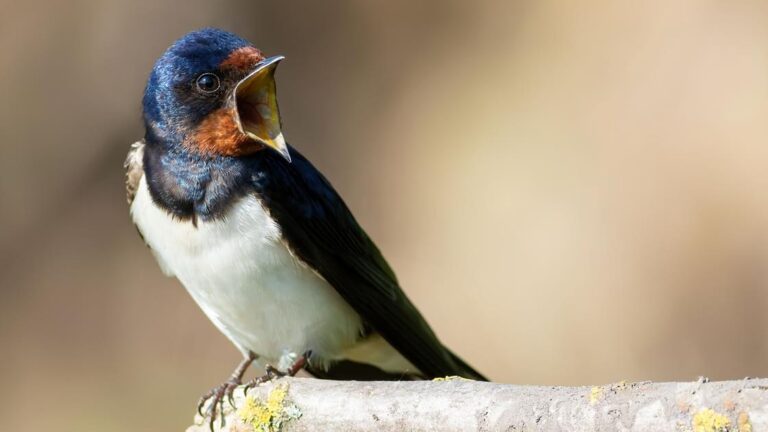
![10 birds with speckled breast [Pictures+ IDs]](https://birdsology.com/wp-content/uploads/2022/10/33-600x400.jpg)
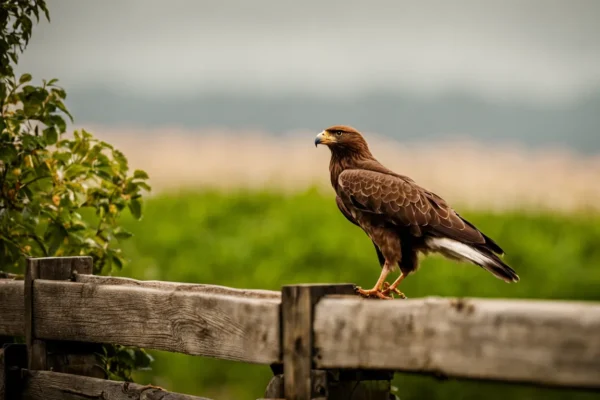
![Why are Birds so Cute [Explained]](https://birdsology.com/wp-content/uploads/2023/08/49-600x400.jpg)

